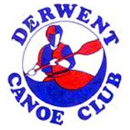
Mersey River – Wildwater Race Course
Distance: 4.5 km
Average Gradient: 5m/km,
Peak Gradient: 10m/km
Difficulty: Grade 2-3.
Paddling Time: 1 hour OR as short as13mins at race pace.
Entry Point: Mersey Forest Road Bridge (C171), from the car park on the left side of the road (Grid ref. DP 350 804).
Exit Point: Exit Point: There is a track leading down to the river 100m. upstream of the Arm River Bridge, on the Mersey Forest Road (Grid ref. DP 346 841).
Water Level: >1100 cusecs is high, 850 cusecs typical, 600 cusecs is low (850 cusecs, planned race level).
Tasmap: 1:100,000 Mersey (Land Tenure Index Series).
Shuttle: 10mins along a good quality gravel road.
General Description: The river is flat but fast flowing to begin with, then building up to grade 2 until a sharp right hand corner. This first drop consists of two stoppers, both a reasonable size but presenting no real problem. The river then consists of waves and small boulders for about 1 km until ‘Wentworth Street’, the former site of a slalom course. Take the right channel, either side of the rock at the top. Caution must be taken a little further down not to get washed sideways into the wall on the right. Another 500m. to the ‘Berlin Wall’ which, despite its name presents no real difficulty. Start at the centre of the channel and head left. The next rapid of note is the slalom course about 1 km down, the initial drop being a rodeo hole known as the ‘Washing Machine’. The rapid ends with two large boulders (Gemini Rocks), take the left channel or paddle between the boulders. The rocky lower slalom course follows immediately. A rapid on a sharp right turn, at the end of a long straight, brings the finish into view. Another 200m leads to a finish line (normal ‘Classic’ event) level at the downstream end of a large eddy on river left.
The ‘Gut-buster’ selection race, continues to a finish line at the head of Lake Parangana, via continuous stretches of grade 1-2 waves. A 1.5km paddle across the lake leads to a get-out at a picnic area on river left.

Carol Hurst – Negotiating the Berlin Wall

Brady’s Lakes Slalom Course – Woodward’s Canal
Distance: 600m.
Average Grade: 20 m/km
Peak Grade: 50 m/km through the Cruncher
Difficulty: Grade 3.
Paddling Time: 3 minutes.
Entry Point: From the Loop Road (off A10) around the water course or the start bay (Grid ref. DP 581 248).
Exit Point: From the lake at the bottom of the course (Grid ref. 581 246).
Water Level:
Tasmap: 1:100 000 Nive (Land Tenure Index Series).
Shuttle: A short walk along tracks on the western bank.
General Description: The Brady’s Lake Slalom Course has for many years been Australia’s premier slalom course (certainly prior to the 2000 Olympics). It is an excellent venue for competent paddlers to practice their white water skills. The water course consists of large standing waves and powerful stoppers. The first drop consists of a 5 metre ramp into a superb rodeo hole (‘The Gibbers’) and has been used for several of these events. The notorious ‘cruncher’ is about 150m. from the top. It consists of a double stage drop with a stopper at the bottom of the first stage. It is usually quite safe but is very shallow and hence a capsize could result in minor facial surgery. It can be portaged easily. ‘Mellifont Street’, the bottom portion of the course is very steep, often shallow and always fast. The entire course can be inspected from the bank. This is essential as a capsize could result in a long swim down the course. The sluice gates at the very top of the course should be avoided.

Tom Gibbs - Rapid Sprint course

Carol Hurst through the Mellifont Street stopper on the Rapid Sprint course
Forth River – Lake Paloona to Turners Beach
Distance: 12 Km.
Average Grade: 2 m/km
Peak Grade: 5 m/km
Difficulty: Grade 1-2.
Paddling Time: 3 hours.
Entry Point: 1 Km. above Paloona Bridge from Paloona Road (C144). Take the track down to Paloona Power Station and enter opposite the Wilmot River Junction (Grid ref. 371 300).
Exit Point: Turners Beach picnic ground, on the left bank 100m. after the Bass Highway Bridge (Grid ref. 370 428).
Water Level: River height is typically controlled by Hydo release which is unpredictable if not booked. Race level is typically 1200 cusecs.
Tasmap: 1:100 000 Forth (Land Tenure Index Series).
Shuttle: 10mins along main roads (tar sealed). 
General Description: There are only two real features on the river. The first is the Tasmanian Canoe Club Slalom Course which is grade 2. It consists of a small rapid then a flat pool of 50m. then another small rapid with a number of man made obstructions to create waves and eddies. It is an excellent place to practice white water skills. Under NO circumstances grab hold of the slalom poles that are erected there. The second feature is the Forth Weir. There is ample warning with signs hanging over the river. Portage well before the weir, or portage on the left side if the river is low. Observe the warnings. ‘Six people have drowned there, don’t be the seventh.’ ‘Dangerous weir below.’ ‘Exit here.’ This sign may be missing at times. This weir is extremely dangerous and must not be used for practice. Under no circumstances should it be paddled.
The Tasmanian Canoe Club’s Slalom Course and training area is situated 8.5 Km. upstream of the village of Forth on the Cradle Mt. Road. Good camping and basic toilet facilities are on site. Many visiting canoeists, school groups and youth organisations use this area as a base.

Forth Slalom course at the end of the U15 Wildwater course
